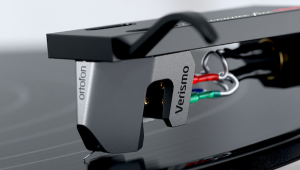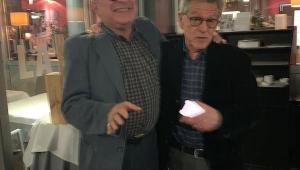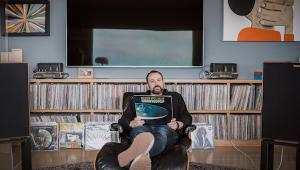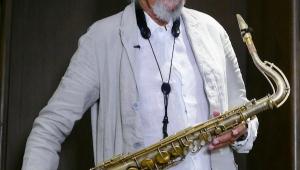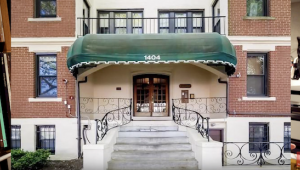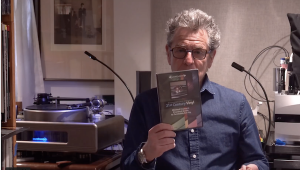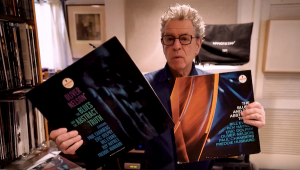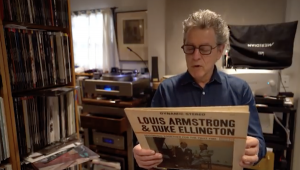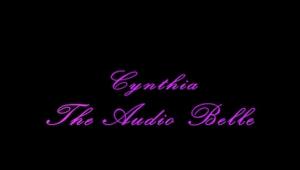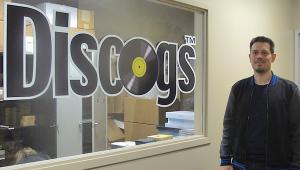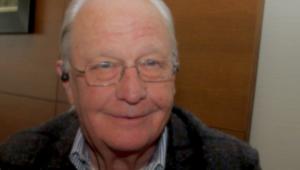Recording Elvis and Roy With Legendary Studio Wiz Bill Porter-Part 2
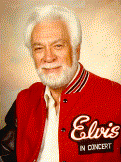
At the end of Part 1, Mr. Porter had just left RCA Studios.
MF: Why did you leave?
BP: I left RCA because they tried to dictate to me and I wasn't gonna be dictated to.
MF: Dictate to you what?
BP: I had a small publishing company and they told me it was a conflict of interest. I said, 'How can that be, everybody else has got one. Chet has one.” “yes, but you work with a lot of different clients.” “Yes, but I'm not abusing the privilege.” So they said either the publishing company or you go. So I made my decision. The legal department said there was nothing wrong, but personnel did. Steve Sholes called and said “Now Bill, please don't leave.” “ I said story Steve.”
Meanwhile I went looking at Columbia and they said “Come on, we'll take you any day of the week.” In fact they didn't believe that I was going when I called RCA in New York to say goodbye.
“You're not going?” “Yes I am, I gave you notice two weeks ago.” They didn't believe it and they had to scramble like mad to get someone down there for Monday's session. They didn't think I'd go. Nobody leaves RCA. What's the matter with you?
MF: So then you went to Columbia.
BP: This was November of 1964. I was there for six months. Then Fred Foster decided he'd have his own studio. So I jumped when I had the chance to manage the studio. I was there roughly two years. That's where I cut Orbison's biggest hit “Pretty Woman.” “It's Over” was cut there too.
MF: Could you hear the difference between the studios?
BP: Oh yes. The equipment wasn't as good at Fred's studio, because actually he bought an existing studio that belonged to Sam Philips (of Sun Records fame-the man who “discovered” Elvis). Acoustically it was fantastic. It was an an old Masonic lodge hall. All wood, big ceiling about twenty-five feet high. I mean you could put about one hundred musicians in it easy.
But the console wasn't so good. The live echo chamber wasn't as good either. Of course an EMT is an EMT (a mechanical echo device). But one reason I go the EMTs to sound like they did-I had them in a room all by themselves and it was a real cold room and I didn't go according to specifications. I drove the chamber hard. I went for what I wanted it to sound like. And I switched the meter off on the feed so I wouldn't see the meter banging against the pin all the time. So I drove it hard and took a very small amount back. That's one of the secrets of the sound…
MF: When you left RCA and Elvis kept recording, if I were to compare your last recording with the first with the new engineer, would I hear the difference?
BP: Oh yes. Like daylight and dark…
MF: What were the big hits he had after you left?
BP: He didn't have any, until Felton Jarvis got involved. It's kind of strange. I recorded “Crying in the Chapel” and they re-released it in 1965 and it went back on the charts.
MF: Was Elvis a hi-fi fan? Did he have a bid system?
BP: I never went into his bedroom, but I put a really elaborate system in his racquetball court. He had big, three-way Electrovoice custom systems with 18-inch woofers. Of course, you couldn't turn it up too much in a racquetball court, because the sound would bounce around so much… I was using Crown amps. I had it set up for radio, cassettes and records.
MF: Do you remember what turntable it was?
BP: No.
MF: That's healthy.
BP: I had a Crown IC 150 preamp and a Lux(man) tuner.
MF: Did Elvis have a big record collection?
BP: I never saw the stuff he had. He carried tapes on the road, but he didn't listen too much. His entourage did. They had a VCR in the plane they used. They watched a lot of movies.
MF: That was before Beta and VHS. They must have had _ inch.
BP: Yes. U-Matics. They had access to movies. If a new movie came out, they had it.
MF: Now how about Roy Orbison? Was recording him similar to Elvis?
BP: No. Orbison, to a great extent, was arranged. Anita Kerr did a lot of charts for him. She was really good at that. Obviously with strings and stuff you needed to have charts. The rhythm patterns are basically ad-libbed. She had the basic feel she wanted to capture and they pretty much went along with it…
There's a story about “Only the Lonely”-and I'm gonna sort of take credit for the Orbison sound, because as a result of what happened with that recording, he had a trademark.
We had done recording before. The first one was on RCA and they didn't release it. So Monument picked Roy up and did the very same song-an awful song, “With a Bug” or something. And they released it and it went nowhere. So then Fred Foster said let's change the concept, and brought strings into the next session. And that was a tune called “Uptown” which made it to the bottom of the charts.
We'd just finished that record session and Orbison came in and said here's my next song. So Orbison strummed the guitar and sang, and there were two guys standing behind sort of like singing, but I thought they were just hangers on. And Roy looks at me and says “That's the sound I want.” And Fred says “What sound?” So I walked over there, and these guys are whispering the words and I thought, my God! I'll never get that on the mix. No way. I said, “Must they sing so softly?” “Yeah,” Roy said. I said “Well, OK.”
Meanwhile I'm thinking how am I going to do this in one take? If I opened the mike up that much, it would let everything else in. So when time came to do the recording I knew I can't beat them. I've got to join them.
My normal mix is, I get a balance on the rhythm section, piano, bass, drums, guitar, whatever, then I add the sweetening-strings, voices-then I put the artist on top. It's kind of like a pyramid. This time I knew if I did that, forget it!
So what I did was take the “dum dum” sound real soft and I mixed down from that instead of mixing up. And so I was able to get that on top of the mix fairly easy. That “dum dum” sound became Orbison's trademark. That's what made that record. That soft, breathy vocal.
MF: So how did you feel when Orbison went over to MGM and didn't take you with him?
BP: I didn't appreciate it, to be frank with you.
MF: Did you say anything?
BP: Nah! All he ever gave me was a steak dinner one time. That's all.
MF: Didn't he get the hint after releasing flop singles and umpteen albums at MGM that didn't do well?
BP: Fred Foster had the uncanny ability to pick the right kind of song, to pick the right people to do the arrangements and then he stepped out of the picture and left it alone.
MF: That happened to Fats Domino when he left Imperial and ended up at ABC.
BP: With the combinations working, don't change it. With Orbison, the change occurred basically because of Wesley Rose. He wanted that contract with Roy-he was doing his job as a manager, I'm not faulting Wesley, but he didn't know that much about the music, and Roy listened to him.
MF: Because he was taking him to a bigger label for bigger bucks?
BP: But Monument initially took the risks with Orbison. Their concept of how to record Roy was what made it work. Now you take “Running Scared.” That songg had a dynamic range of about 25dB. And for a 45 in those days that was unheard of. If you had 3dB you were doing great…
MF: What was your very last recording session?
BP: I honestly don't remember.
MF: But wasn't there a point where you just said to yourself “This is it?”
BP: I was in my Vegas studio…You reach a point acquiring a skill where you want to be appreciated for what you do. You reach a higher level than other people have. And you realize you're operating in a different realm. And of course many of those sessions were bread-and-butter affairs. You've got to keep the doors open.But I got tired after awhile of knocking myself out to get a good, unique sound, and the client wouldn't appreciate it…



